Refine search
No keyword found to refine search
keywords EN
Places
Names
109 documents found
| 1 | 2 |
Documents per page :
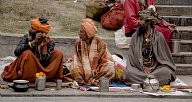
12-13 February, 2018 - Shiva Ratri at the Pashupatinath Temple. It is a very important celebration in Hinduism.
Noémie Repetto / Le Pictorium
LePictorium_0174360.jpg
The Shiva Ratri (or Maha Shiavatri translated as 'The Great Night of Shiva') is normally held on February 13th. However, the sadhus (beggars) begin to gather the day before, the 12th of February. These people go to the temple of Pashupatinath to celebrate the birthday of Lord Shiva. Shiva is represented in the form of yogi or beggar and many other forms, hence the presence of as many beggars from Kathmandu in this temple on this particular day. The name 'Pashupati' is one of the many names that Lord Shiva carries.
The custom of Shiva Ratri is to fast and watch all night by performing a 'pûjâ' every 3 hours (4 times during the night). During these ablutions, milk, curd, butter and finally honey are given as offerings to God, in this order. Each ablution is followed by a bilva leaf offering, appreciated by Shiva.
It is not abnormal, almost expected, to see beggars smoking drugs during this festival.
The custom of Shiva Ratri is to fast and watch all night by performing a 'pûjâ' every 3 hours (4 times during the night). During these ablutions, milk, curd, butter and finally honey are given as offerings to God, in this order. Each ablution is followed by a bilva leaf offering, appreciated by Shiva.
It is not abnormal, almost expected, to see beggars smoking drugs during this festival.
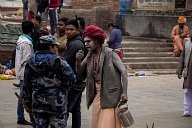
12-13 February, 2018 - Shiva Ratri at the Pashupatinath Temple. It is a very important celebration in Hinduism.
Noémie Repetto / Le Pictorium
LePictorium_0174367.jpg
The Shiva Ratri (or Maha Shiavatri translated as 'The Great Night of Shiva') is normally held on February 13th. However, the sadhus (beggars) begin to gather the day before, the 12th of February. These people go to the temple of Pashupatinath to celebrate the birthday of Lord Shiva. Shiva is represented in the form of yogi or beggar and many other forms, hence the presence of as many beggars from Kathmandu in this temple on this particular day. The name 'Pashupati' is one of the many names that Lord Shiva carries.
The custom of Shiva Ratri is to fast and watch all night by performing a 'pûjâ' every 3 hours (4 times during the night). During these ablutions, milk, curd, butter and finally honey are given as offerings to God, in this order. Each ablution is followed by a bilva leaf offering, appreciated by Shiva.
It is not abnormal, almost expected, to see beggars smoking drugs during this festival.
The custom of Shiva Ratri is to fast and watch all night by performing a 'pûjâ' every 3 hours (4 times during the night). During these ablutions, milk, curd, butter and finally honey are given as offerings to God, in this order. Each ablution is followed by a bilva leaf offering, appreciated by Shiva.
It is not abnormal, almost expected, to see beggars smoking drugs during this festival.

12-13 February, 2018 - Shiva Ratri at the Pashupatinath Temple. It is a very important celebration in Hinduism.
Noémie Repetto / Le Pictorium
LePictorium_0174368.jpg
The Shiva Ratri (or Maha Shiavatri translated as 'The Great Night of Shiva') is normally held on February 13th. However, the sadhus (beggars) begin to gather the day before, the 12th of February. These people go to the temple of Pashupatinath to celebrate the birthday of Lord Shiva. Shiva is represented in the form of yogi or beggar and many other forms, hence the presence of as many beggars from Kathmandu in this temple on this particular day. The name 'Pashupati' is one of the many names that Lord Shiva carries.
The custom of Shiva Ratri is to fast and watch all night by performing a 'pûjâ' every 3 hours (4 times during the night). During these ablutions, milk, curd, butter and finally honey are given as offerings to God, in this order. Each ablution is followed by a bilva leaf offering, appreciated by Shiva.
It is not abnormal, almost expected, to see beggars smoking drugs during this festival.
The custom of Shiva Ratri is to fast and watch all night by performing a 'pûjâ' every 3 hours (4 times during the night). During these ablutions, milk, curd, butter and finally honey are given as offerings to God, in this order. Each ablution is followed by a bilva leaf offering, appreciated by Shiva.
It is not abnormal, almost expected, to see beggars smoking drugs during this festival.
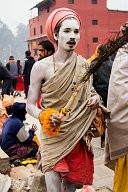
12-13 February, 2018 - Shiva Ratri at the Pashupatinath Temple. It is a very important celebration in Hinduism.
Noémie Repetto / Le Pictorium
LePictorium_0174385.jpg
The Shiva Ratri (or Maha Shiavatri translated as 'The Great Night of Shiva') is normally held on February 13th. However, the sadhus (beggars) begin to gather the day before, the 12th of February. These people go to the temple of Pashupatinath to celebrate the birthday of Lord Shiva. Shiva is represented in the form of yogi or beggar and many other forms, hence the presence of as many beggars from Kathmandu in this temple on this particular day. The name 'Pashupati' is one of the many names that Lord Shiva carries.
The custom of Shiva Ratri is to fast and watch all night by performing a 'pûjâ' every 3 hours (4 times during the night). During these ablutions, milk, curd, butter and finally honey are given as offerings to God, in this order. Each ablution is followed by a bilva leaf offering, appreciated by Shiva.
It is not abnormal, almost expected, to see beggars smoking drugs during this festival.
The custom of Shiva Ratri is to fast and watch all night by performing a 'pûjâ' every 3 hours (4 times during the night). During these ablutions, milk, curd, butter and finally honey are given as offerings to God, in this order. Each ablution is followed by a bilva leaf offering, appreciated by Shiva.
It is not abnormal, almost expected, to see beggars smoking drugs during this festival.
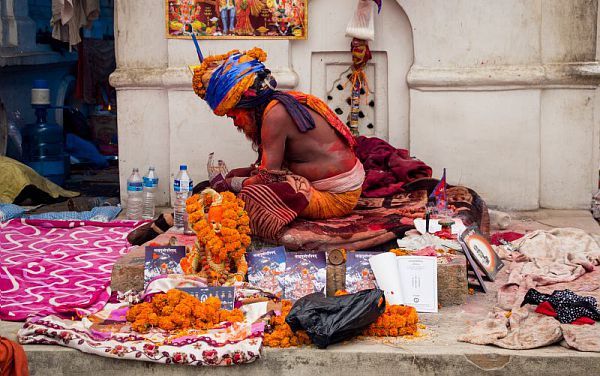
12-13 February, 2018 - Shiva Ratri at the Pashupatinath Temple. It is a very important celebration in Hinduism.
Noémie Repetto / Le Pictorium
LePictorium_0174394.jpg
The Shiva Ratri (or Maha Shiavatri translated as 'The Great Night of Shiva') is normally held on February 13th. However, the sadhus (beggars) begin to gather the day before, the 12th of February. These people go to the temple of Pashupatinath to celebrate the birthday of Lord Shiva. Shiva is represented in the form of yogi or beggar and many other forms, hence the presence of as many beggars from Kathmandu in this temple on this particular day. The name 'Pashupati' is one of the many names that Lord Shiva carries.
The custom of Shiva Ratri is to fast and watch all night by performing a 'pûjâ' every 3 hours (4 times during the night). During these ablutions, milk, curd, butter and finally honey are given as offerings to God, in this order. Each ablution is followed by a bilva leaf offering, appreciated by Shiva.
It is not abnormal, almost expected, to see beggars smoking drugs during this festival.
The custom of Shiva Ratri is to fast and watch all night by performing a 'pûjâ' every 3 hours (4 times during the night). During these ablutions, milk, curd, butter and finally honey are given as offerings to God, in this order. Each ablution is followed by a bilva leaf offering, appreciated by Shiva.
It is not abnormal, almost expected, to see beggars smoking drugs during this festival.
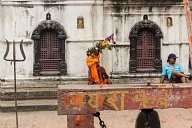
Nepal - Kathmandu.
Pashupatinath Temple. World Heritage since 1979.
Pashupatinath Temple. World Heritage since 1979.
Noémie Repetto / Le Pictorium
LePictorium_0167431.jpg
Nepal - Kathmandu.
The temple of Pashupatinath. World Heritage of Humanity since 1979. A man represents Shiva in human form and moves to the site of the temple. He wears a wreath of flowers and the body painted in orange in accordance with the statue illustrating Shiva, located at the entrance to the site.
The temple of Pashupatinath. World Heritage of Humanity since 1979. A man represents Shiva in human form and moves to the site of the temple. He wears a wreath of flowers and the body painted in orange in accordance with the statue illustrating Shiva, located at the entrance to the site.
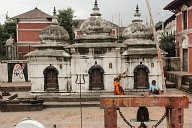
Nepal - Kathmandu.
Pashupatinath Temple. World Heritage since 1979.
Pashupatinath Temple. World Heritage since 1979.
Noémie Repetto / Le Pictorium
LePictorium_0167432.jpg
Nepal - Kathmandu.
The temple of Pashupatinath. World Heritage of Humanity since 1979. A man represents Shiva in human form and moves to the site of the temple. He wears a wreath of flowers and the body painted in orange in accordance with the statue illustrating Shiva, located at the entrance to the site.
The temple of Pashupatinath. World Heritage of Humanity since 1979. A man represents Shiva in human form and moves to the site of the temple. He wears a wreath of flowers and the body painted in orange in accordance with the statue illustrating Shiva, located at the entrance to the site.
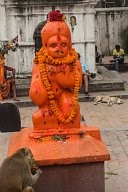
Nepal - Kathmandu.
Pashupatinath Temple. World Heritage since 1979.
Pashupatinath Temple. World Heritage since 1979.
Noémie Repetto / Le Pictorium
LePictorium_0167433.jpg
Nepal - Kathmandu.
The temple of Pashupatinath. World Heritage of Humanity since 1979. Statue of Shiva in animal form (monkey). The flower necklaces are rosaries. The pilgrims place food in the mouth of the statue as an offering. The wild monkeys come to serve.
In the background, we can perceive a man illustrating the statue in human form.
The temple of Pashupatinath. World Heritage of Humanity since 1979. Statue of Shiva in animal form (monkey). The flower necklaces are rosaries. The pilgrims place food in the mouth of the statue as an offering. The wild monkeys come to serve.
In the background, we can perceive a man illustrating the statue in human form.
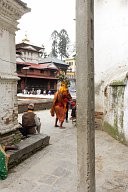
Nepal - Kathmandu.
Pashupatinath Temple. World Heritage since 1979.
Pashupatinath Temple. World Heritage since 1979.
Noémie Repetto / Le Pictorium
LePictorium_0167448.jpg
Nepal - Kathmandu.
The temple of Pashupatinath. World Heritage of Humanity since 1979. A man represents Shiva in human form and moves to the site of the temple. He wears a wreath of flowers and the body painted in orange in accordance with the statue illustrating Shiva, located at the entrance to the site.
The temple of Pashupatinath. World Heritage of Humanity since 1979. A man represents Shiva in human form and moves to the site of the temple. He wears a wreath of flowers and the body painted in orange in accordance with the statue illustrating Shiva, located at the entrance to the site.
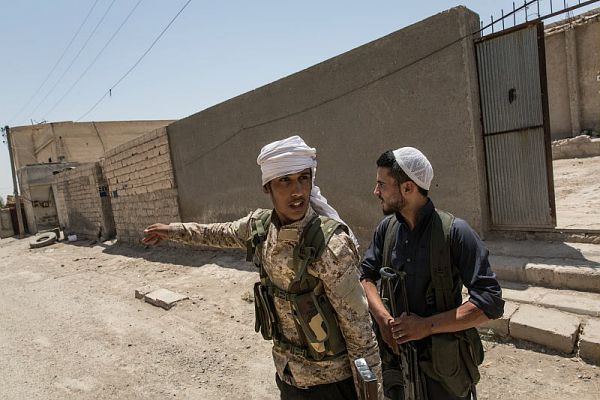
SYRIE / The Freedom Katiba against RAQQA / LIWA AL TAHRIR
Chris Huby / Le Pictorium
LePictorium_0165283.jpg
Syria / Raqqa / West District / Hawi al-Hawa / Frontline. Arab fighters sneak into the streets of the neighborhood to dislodge the possible last fighters of Daesh.
Several Arab groups of the SDF (Syrian Democratic Forces) are installed in houses taken over in Daesh. This unit belongs to Liwa Al-Tharir, a brigade of Arab fighters who decided to fight with the fanatics of the EI.
Several Arab groups of the SDF (Syrian Democratic Forces) are installed in houses taken over in Daesh. This unit belongs to Liwa Al-Tharir, a brigade of Arab fighters who decided to fight with the fanatics of the EI.
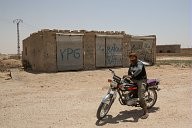
SYRIA / ROJAVA / RAQQA IS BLEEDING - WRATH OF THE EUPHRATE June/July 2017
Chris Huby / Le Pictorium
LePictorium_0164812.jpg
July 2017 - Syria / ROJAVA (Northern Syria) / Road to Raqqa / Not far from West Frontline / A turbaned motorcycle takes a break in front of a small house tagged -Raqqa- and -YPG-
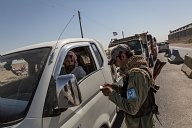
SYRIA / ROJAVA / RAQQA IS BLEEDING - WRATH OF THE EUPHRATE June/July 2017
Chris Huby / Le Pictorium
LePictorium_0164813.jpg
July 2017 - Syria / ROJAVA (North Syrian) / Road to Raqqa / Ain Issa checkpoint / a police officer of the Asayis (Kurdish police) check the vehicles and especially insists on those belonging to the Arabs.
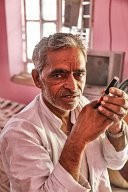
Portraits of men in Rajasthan
Sandrine Huet / Le Pictorium
LePictorium_0146582.jpg
Men of Rajasthan are very often breeders, ex nomads called Raikas.
they wear a 9 meter-long turban that is the main piece of their traditional costume. It has multi purposes and informs on the man's social status. Men in Rajasthan often have a mustache as a symbol of their virility.
they wear a 9 meter-long turban that is the main piece of their traditional costume. It has multi purposes and informs on the man's social status. Men in Rajasthan often have a mustache as a symbol of their virility.
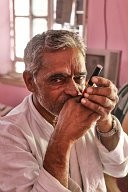
Portraits of men in Rajasthan
Sandrine Huet / Le Pictorium
LePictorium_0146583.jpg
Men of Rajasthan are very often breeders, ex nomads called Raikas.
they wear a 9 meter-long turban that is the main piece of their traditional costume. It has multi purposes and informs on the man's social status. Men in Rajasthan often have a mustache as a symbol of their virility.
they wear a 9 meter-long turban that is the main piece of their traditional costume. It has multi purposes and informs on the man's social status. Men in Rajasthan often have a mustache as a symbol of their virility.
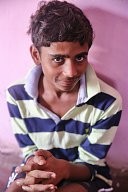
Portraits of men in Rajasthan
Sandrine Huet / Le Pictorium
LePictorium_0146584.jpg
Men of Rajasthan are very often breeders, ex nomads called Raikas.
they wear a 9 meter-long turban that is the main piece of their traditional costume. It has multi purposes and informs on the man's social status. Men in Rajasthan often have a mustache as a symbol of their virility.
they wear a 9 meter-long turban that is the main piece of their traditional costume. It has multi purposes and informs on the man's social status. Men in Rajasthan often have a mustache as a symbol of their virility.
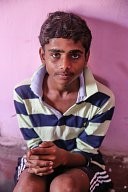
Portraits of men in Rajasthan
Sandrine Huet / Le Pictorium
LePictorium_0146585.jpg
Men of Rajasthan are very often breeders, ex nomads called Raikas.
they wear a 9 meter-long turban that is the main piece of their traditional costume. It has multi purposes and informs on the man's social status. Men in Rajasthan often have a mustache as a symbol of their virility.
they wear a 9 meter-long turban that is the main piece of their traditional costume. It has multi purposes and informs on the man's social status. Men in Rajasthan often have a mustache as a symbol of their virility.
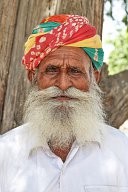
Portraits of men in Rajasthan
Sandrine Huet / Le Pictorium
LePictorium_0146588.jpg
Men of Rajasthan are very often breeders, ex nomads called Raikas.
they wear a 9 meter-long turban that is the main piece of their traditional costume. It has multi purposes and informs on the man's social status. Men in Rajasthan often have a mustache as a symbol of their virility.
they wear a 9 meter-long turban that is the main piece of their traditional costume. It has multi purposes and informs on the man's social status. Men in Rajasthan often have a mustache as a symbol of their virility.
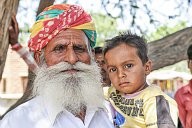
Portraits of men in Rajasthan
Sandrine Huet / Le Pictorium
LePictorium_0146589.jpg
Men of Rajasthan are very often breeders, ex nomads called Raikas.
they wear a 9 meter-long turban that is the main piece of their traditional costume. It has multi purposes and informs on the man's social status. Men in Rajasthan often have a mustache as a symbol of their virility.
they wear a 9 meter-long turban that is the main piece of their traditional costume. It has multi purposes and informs on the man's social status. Men in Rajasthan often have a mustache as a symbol of their virility.
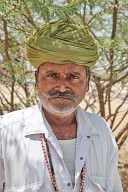
Portraits of men in Rajasthan
Sandrine Huet / Le Pictorium
LePictorium_0146590.jpg
Men of Rajasthan are very often breeders, ex nomads called Raikas.
they wear a 9 meter-long turban that is the main piece of their traditional costume. It has multi purposes and informs on the man's social status. Men in Rajasthan often have a mustache as a symbol of their virility.
they wear a 9 meter-long turban that is the main piece of their traditional costume. It has multi purposes and informs on the man's social status. Men in Rajasthan often have a mustache as a symbol of their virility.
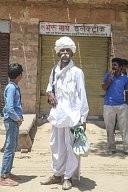
Portraits of men in Rajasthan
Sandrine Huet / Le Pictorium
LePictorium_0146591.jpg
Men of Rajasthan are very often breeders, ex nomads called Raikas.
they wear a 9 meter-long turban that is the main piece of their traditional costume. It has multi purposes and informs on the man's social status. Men in Rajasthan often have a mustache as a symbol of their virility.
they wear a 9 meter-long turban that is the main piece of their traditional costume. It has multi purposes and informs on the man's social status. Men in Rajasthan often have a mustache as a symbol of their virility.
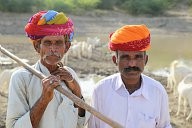
Portraits of men in Rajasthan
Sandrine Huet / Le Pictorium
LePictorium_0146592.jpg
Men of Rajasthan are very often breeders, ex nomads called Raikas.
they wear a 9 meter-long turban that is the main piece of their traditional costume. It has multi purposes and informs on the man's social status. Men in Rajasthan often have a mustache as a symbol of their virility.
they wear a 9 meter-long turban that is the main piece of their traditional costume. It has multi purposes and informs on the man's social status. Men in Rajasthan often have a mustache as a symbol of their virility.
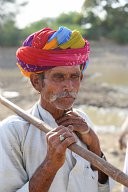
Portraits of men in Rajasthan
Sandrine Huet / Le Pictorium
LePictorium_0146593.jpg
Men of Rajasthan are very often breeders, ex nomads called Raikas.
they wear a 9 meter-long turban that is the main piece of their traditional costume. It has multi purposes and informs on the man's social status. Men in Rajasthan often have a mustache as a symbol of their virility.
they wear a 9 meter-long turban that is the main piece of their traditional costume. It has multi purposes and informs on the man's social status. Men in Rajasthan often have a mustache as a symbol of their virility.
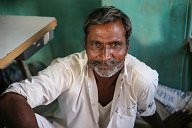
Portraits of men in Rajasthan
Sandrine Huet / Le Pictorium
LePictorium_0146594.jpg
Men of Rajasthan are very often breeders, ex nomads called Raikas.
they wear a 9 meter-long turban that is the main piece of their traditional costume. It has multi purposes and informs on the man's social status. Men in Rajasthan often have a mustache as a symbol of their virility.
they wear a 9 meter-long turban that is the main piece of their traditional costume. It has multi purposes and informs on the man's social status. Men in Rajasthan often have a mustache as a symbol of their virility.
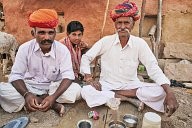
Portraits of men in Rajasthan
Sandrine Huet / Le Pictorium
LePictorium_0146595.jpg
Men of Rajasthan are very often breeders, ex nomads called Raikas.
they wear a 9 meter-long turban that is the main piece of their traditional costume. It has multi purposes and informs on the man's social status. Men in Rajasthan often have a mustache as a symbol of their virility.
they wear a 9 meter-long turban that is the main piece of their traditional costume. It has multi purposes and informs on the man's social status. Men in Rajasthan often have a mustache as a symbol of their virility.
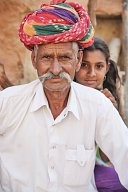
Portraits of men in Rajasthan
Sandrine Huet / Le Pictorium
LePictorium_0146596.jpg
Men of Rajasthan are very often breeders, ex nomads called Raikas.
they wear a 9 meter-long turban that is the main piece of their traditional costume. It has multi purposes and informs on the man's social status. Men in Rajasthan often have a mustache as a symbol of their virility.
they wear a 9 meter-long turban that is the main piece of their traditional costume. It has multi purposes and informs on the man's social status. Men in Rajasthan often have a mustache as a symbol of their virility.
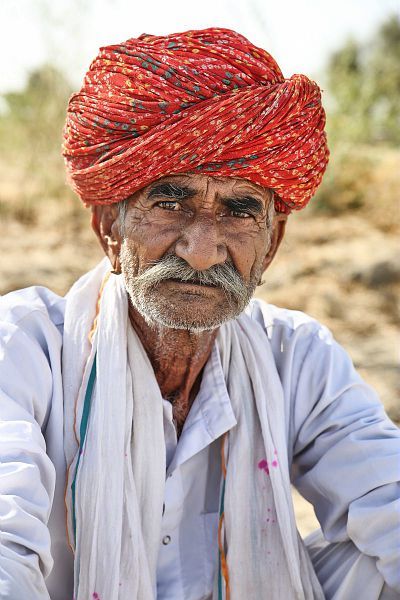
Portraits of men in Rajasthan
Sandrine Huet / Le Pictorium
LePictorium_0146609.jpg
Men of Rajasthan are very often breeders, ex nomads called Raikas.
they wear a 9 meter-long turban that is the main piece of their traditional costume. It has multi purposes and informs on the man's social status. Men in Rajasthan often have a mustache as a symbol of their virility.
they wear a 9 meter-long turban that is the main piece of their traditional costume. It has multi purposes and informs on the man's social status. Men in Rajasthan often have a mustache as a symbol of their virility.
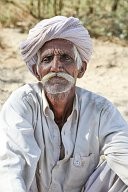
Portraits of men in Rajasthan
Sandrine Huet / Le Pictorium
LePictorium_0146610.jpg
Men of Rajasthan are very often breeders, ex nomads called Raikas.
they wear a 9 meter-long turban that is the main piece of their traditional costume. It has multi purposes and informs on the man's social status. Men in Rajasthan often have a mustache as a symbol of their virility.
they wear a 9 meter-long turban that is the main piece of their traditional costume. It has multi purposes and informs on the man's social status. Men in Rajasthan often have a mustache as a symbol of their virility.
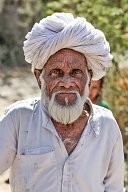
Portraits of men in Rajasthan
Sandrine Huet / Le Pictorium
LePictorium_0146611.jpg
Men of Rajasthan are very often breeders, ex nomads called Raikas.
they wear a 9 meter-long turban that is the main piece of their traditional costume. It has multi purposes and informs on the man's social status. Men in Rajasthan often have a mustache as a symbol of their virility.
they wear a 9 meter-long turban that is the main piece of their traditional costume. It has multi purposes and informs on the man's social status. Men in Rajasthan often have a mustache as a symbol of their virility.
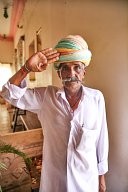
Portraits of men in Rajasthan
Sandrine Huet / Le Pictorium
LePictorium_0146618.jpg
Men of Rajasthan are very often breeders, ex nomads called Raikas.
they wear a 9 meter-long turban that is the main piece of their traditional costume. It has multi purposes and informs on the man's social status. Men in Rajasthan often have a mustache as a symbol of their virility.
they wear a 9 meter-long turban that is the main piece of their traditional costume. It has multi purposes and informs on the man's social status. Men in Rajasthan often have a mustache as a symbol of their virility.
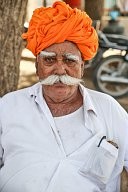
Portraits of men in Rajasthan
Sandrine Huet / Le Pictorium
LePictorium_0146619.jpg
Men of Rajasthan are very often breeders, ex nomads called Raikas.
they wear a 9 meter-long turban that is the main piece of their traditional costume. It has multi purposes and informs on the man's social status. Men in Rajasthan often have a mustache as a symbol of their virility.
they wear a 9 meter-long turban that is the main piece of their traditional costume. It has multi purposes and informs on the man's social status. Men in Rajasthan often have a mustache as a symbol of their virility.

Portraits of men in Rajasthan
Sandrine Huet / Le Pictorium
LePictorium_0146620.jpg
Men of Rajasthan are very often breeders, ex nomads called Raikas.
they wear a 9 meter-long turban that is the main piece of their traditional costume. It has multi purposes and informs on the man's social status. Men in Rajasthan often have a mustache as a symbol of their virility.
they wear a 9 meter-long turban that is the main piece of their traditional costume. It has multi purposes and informs on the man's social status. Men in Rajasthan often have a mustache as a symbol of their virility.
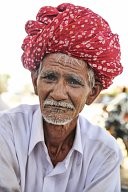
Portraits of men in Rajasthan
Sandrine Huet / Le Pictorium
LePictorium_0146621.jpg
Men of Rajasthan are very often breeders, ex nomads called Raikas.
they wear a 9 meter-long turban that is the main piece of their traditional costume. It has multi purposes and informs on the man's social status. Men in Rajasthan often have a mustache as a symbol of their virility.
they wear a 9 meter-long turban that is the main piece of their traditional costume. It has multi purposes and informs on the man's social status. Men in Rajasthan often have a mustache as a symbol of their virility.
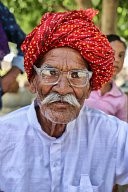
Portraits of men in Rajasthan
Sandrine Huet / Le Pictorium
LePictorium_0146622.jpg
Men of Rajasthan are very often breeders, ex nomads called Raikas.
they wear a 9 meter-long turban that is the main piece of their traditional costume. It has multi purposes and informs on the man's social status. Men in Rajasthan often have a mustache as a symbol of their virility.
they wear a 9 meter-long turban that is the main piece of their traditional costume. It has multi purposes and informs on the man's social status. Men in Rajasthan often have a mustache as a symbol of their virility.
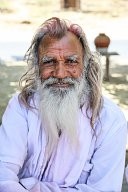
Portraits of men in Rajasthan
Sandrine Huet / Le Pictorium
LePictorium_0146624.jpg
Men of Rajasthan are very often breeders, ex nomads called Raikas.
they wear a 9 meter-long turban that is the main piece of their traditional costume. It has multi purposes and informs on the man's social status. Men in Rajasthan often have a mustache as a symbol of their virility.
they wear a 9 meter-long turban that is the main piece of their traditional costume. It has multi purposes and informs on the man's social status. Men in Rajasthan often have a mustache as a symbol of their virility.
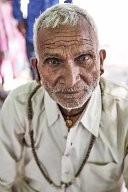
Portraits of men in Rajasthan
Sandrine Huet / Le Pictorium
LePictorium_0146629.jpg
Men of Rajasthan are very often breeders, ex nomads called Raikas.
they wear a 9 meter-long turban that is the main piece of their traditional costume. It has multi purposes and informs on the man's social status. Men in Rajasthan often have a mustache as a symbol of their virility.
they wear a 9 meter-long turban that is the main piece of their traditional costume. It has multi purposes and informs on the man's social status. Men in Rajasthan often have a mustache as a symbol of their virility.
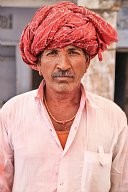
Portraits of men in Rajasthan
Sandrine Huet / Le Pictorium
LePictorium_0146630.jpg
Men of Rajasthan are very often breeders, ex nomads called Raikas.
they wear a 9 meter-long turban that is the main piece of their traditional costume. It has multi purposes and informs on the man's social status. Men in Rajasthan often have a mustache as a symbol of their virility.
they wear a 9 meter-long turban that is the main piece of their traditional costume. It has multi purposes and informs on the man's social status. Men in Rajasthan often have a mustache as a symbol of their virility.
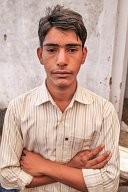
Portraits of men in Rajasthan
Sandrine Huet / Le Pictorium
LePictorium_0146635.jpg
Men of Rajasthan are very often breeders, ex nomads called Raikas.
they wear a 9 meter-long turban that is the main piece of their traditional costume. It has multi purposes and informs on the man's social status. Men in Rajasthan often have a mustache as a symbol of their virility.
they wear a 9 meter-long turban that is the main piece of their traditional costume. It has multi purposes and informs on the man's social status. Men in Rajasthan often have a mustache as a symbol of their virility.
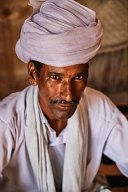
Bishnoi man preparing a decoction of opium
Sandrine Huet / Le Pictorium
LePictorium_0146664.jpg
the Bishnois are a desert tribe of Rajasthan. Bishnoi means the number 29, linked with their 29 life principles based on ecology and the respect of nature and animals.
The decoction of opium is a welcoming ritual, also used during weddings. In the past, it was also aimed to give strength and rigor to warriors and their horses.
The decoction of opium is a welcoming ritual, also used during weddings. In the past, it was also aimed to give strength and rigor to warriors and their horses.
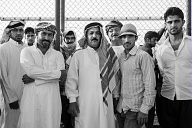
ERBIL, Kurdistan Region. Recently, Internally Displaced Persons (IDPs) at the camp of Dibaga, near Makhmour front line, southwestern of Erbil Province, received humanitarian aid from NGOs
Alexandre Afonso / Le Pictorium
LePictorium_0144334.jpg
newcomers IDP's await to receive food given by Omg's. in camp of Dibaga, near Makhmour front line, southwestern of Erbil Province. Iraq Kurdistan. ERBIL, Kurdistan Region. Recently, Internally Displaced Persons (IDPs) at the camp of Dibaga, near Makhmour front line, southwestern of Erbil Province, received humanitarian aid from NGOs
The camp was built in the beginning of 2015 by the Emirates Red Crescent which cost USD$10 million and built approximately 1,000 units.
Most of the people who flee from the Islamic State (IS) in Mosul and arrive in Peshmerga front lines near Makhmour are sent to the Dibaga camp, after they pass Kurdish security check.
This camp is Overcrowding whit a lack of staff
According to Peshmerga commanders, jihadists often send sleeper cells with people who escape from Mosul to the Kurdistan Region, aiming to conduct terrorist attacks in the Region, but they are confident that no sleeper cells will be able to enter the Kurdistan Region due to their security belt on the front lines.
The camp was built in the beginning of 2015 by the Emirates Red Crescent which cost USD$10 million and built approximately 1,000 units.
Most of the people who flee from the Islamic State (IS) in Mosul and arrive in Peshmerga front lines near Makhmour are sent to the Dibaga camp, after they pass Kurdish security check.
This camp is Overcrowding whit a lack of staff
According to Peshmerga commanders, jihadists often send sleeper cells with people who escape from Mosul to the Kurdistan Region, aiming to conduct terrorist attacks in the Region, but they are confident that no sleeper cells will be able to enter the Kurdistan Region due to their security belt on the front lines.
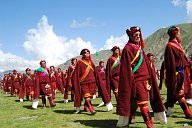
Tibet
Sandrine Huet / Le Pictorium
LePictorium_0139588.jpg
Horse Festival : Tibetan cultural festival of traditional dances and horse races in Chengso, Kham Province
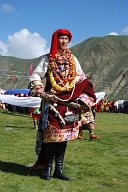
Tibet
Sandrine Huet / Le Pictorium
LePictorium_0139593.jpg
Horse Festival : Tibetan cultural festival of traditional dances and horse races in Chengso, Kham Province
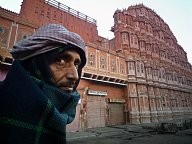
Life in India: Jaipur.
Sylvain Leser / Le Pictorium
LePictorium_0121931.jpg
Life in India: Jaipur.
-
"Iztopgood" is a Rickshaw driver in front of Hawa Mahal. -
-
"Iztopgood" is a Rickshaw driver in front of Hawa Mahal. -
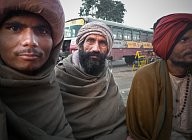
Jaipur the Pink City of Rajasthan
Indian Glance
Indian Glance
Sylvain Leser / Le Pictorium
LePictorium_0121934.jpg
Time of Chai
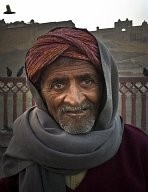
Jaipur the Pink City of Rajasthan
Indian Glance
Indian Glance
Sylvain Leser / Le Pictorium
LePictorium_0121944.jpg
Portrait at the foot of Amber Fort
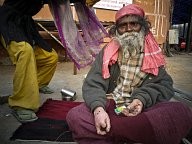
Jaipur the Pink City of Rajasthan
Indian Glance
Indian Glance
Sylvain Leser / Le Pictorium
LePictorium_0121946.jpg
Jaipur Pink City
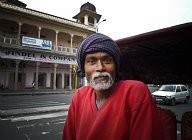
Jaipur the Pink City of Rajasthan
Indian Glance
Indian Glance
Sylvain Leser / Le Pictorium
LePictorium_0121947.jpg
Street portrait
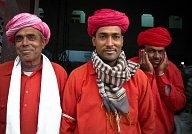
Jaipur the Pink City of Rajasthan
Indian Glance
Indian Glance
Sylvain Leser / Le Pictorium
LePictorium_0121950.jpg
Porters of the Jaipur railway station
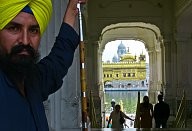
Amritsar, Golden Temple
visiting the "turban People of India"
glance of Indian
visiting the "turban People of India"
glance of Indian
Sylvain Leser / Le Pictorium
LePictorium_0121962.jpg
Amritsar, Golden Temple - Sikh Gard
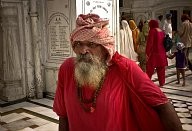
Sikh Golden Temple in Amritsar
Sylvain Leser / Le Pictorium
LePictorium_0121963.jpg
The men of the community,
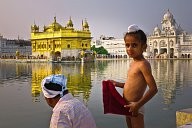
Amritsar, Golden Temple
visiting the "turban People of India"
visiting the "turban People of India"
Sylvain Leser / Le Pictorium
LePictorium_0121969.jpg
Young Sikh in the hour of her ritual bath
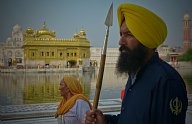
Sikh Golden Temple in Amritsar
Sylvain Leser / Le Pictorium
LePictorium_0121972.jpg
The men of the community, the guard
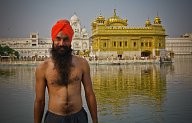
The sacred lake of the Golden Temple of Amritsar
Sylvain Leser / Le Pictorium
LePictorium_0121974.jpg
The pool with nectars, The Sikh
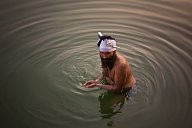
Life in India : Amritsar.
Sylvain Leser / Le Pictorium
LePictorium_0121982.jpg
Life in India : Amritsar.
-
"The fisherman of nectar" - At the heart of Sikhism. - Ritual bath in the holy waters of Lake of the Golden Temple.
-
"The fisherman of nectar" - At the heart of Sikhism. - Ritual bath in the holy waters of Lake of the Golden Temple.
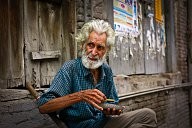
Amritsar, Golden Temple
visiting the "turban People of India"
Indian Glance
visiting the "turban People of India"
Indian Glance
Sylvain Leser / Le Pictorium
LePictorium_0121998.jpg
Old man taking his meals in a street in Amritsar
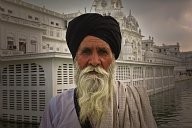
Sikh Golden Temple in Amritsar
Sylvain Leser / Le Pictorium
LePictorium_0121999.jpg
The men of the community, an old
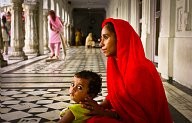
Amritsar, Golden Temple
visiting the "turban People of India"
Indian Glance
visiting the "turban People of India"
Indian Glance
Sylvain Leser / Le Pictorium
LePictorium_0122000.jpg
Temple of Amritsar
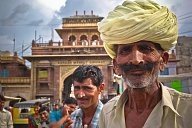
Rajhastan
Country of Lords & Gypsies
Jodhpur
Country of Lords & Gypsies
Jodhpur
Sylvain Leser / Le Pictorium
LePictorium_0122007.jpg
Sardar Bazar
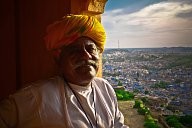
Rajhastan
Country of Lords & Gypsies
Jodhpur
Country of Lords & Gypsies
Jodhpur
Sylvain Leser / Le Pictorium
LePictorium_0122010.jpg
Guardian of the Mehrangarh Fort
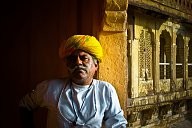
Rajhastan
Country of Lords & Gypsies
Jodhpur
Country of Lords & Gypsies
Jodhpur
Sylvain Leser / Le Pictorium
LePictorium_0122011.jpg
Guardian of the Mehrangarh Fort
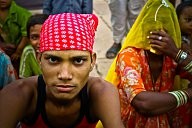
Rajhastan
Country of Lords & Gypsies
Jodhpur
Country of Lords & Gypsies
Jodhpur
Sylvain Leser / Le Pictorium
LePictorium_0122025.jpg
Indian tourists at Mehrangarh Fort
Next page
